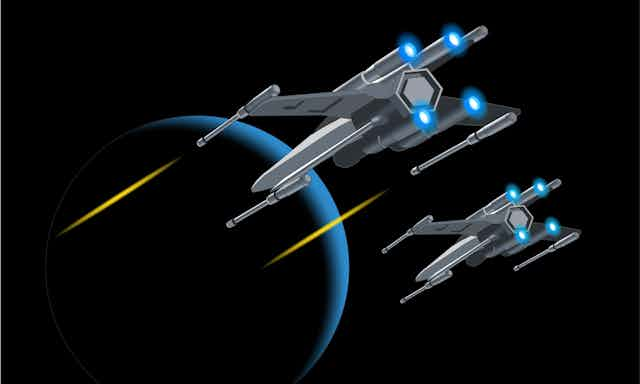When the world’s first artificial satellite, Sputnik I, was launched on October 4, 1957, it heralded the need for legal regulation of the exploration and use of outer space.
Since then international law has been developed to facilitate the use of technologies such as satellite telecommunications, global positioning systems, remote sensing technology for weather forecasting and disaster management, and television broadcast from satellites.
In this regard, space law has played a positive role by allowing for – and not unduly restricting – the development of space-related technology.
At the same time, the existing legal regime has not prevented the development of military technology capable of utilising outer space.
There are some restrictions, but these were specified in the space law treaties in relatively general terms and were open to interpretation as to what they did (and did not) prohibit.
This is not entirely surprising. The development of space-related technology was inextricably related to military strength, both in reality and to influence the perception of others.
Cold War tensions
It is no coincidence that the space race emerged at the height of the Cold War when both the United States and the Soviet Union strove to flex their technological muscles.
The early stages of human space activity coincided with a period of quite considerable tension. The possibility of large scale and potentially highly destructive military conflict between the (space) superpowers always lurked in the background.
The successful launch of Sputnik generated unease in the western world because the technology used was similar to that for ballistic missiles.
It was crucial that efforts were made by the international community to regulate this new frontier in order to avoid a build-up of weapons and armed conflict in space.
The obligations and restrictions were eventually agreed and codified in five major United Nations space treaties. They addressed, in part, some specific military and weapons-related aspects of space activities.
Every year since the early 1980s, the United Nations (UN) has passed a resolution on the Prevention of an Arms Race in Outer Space.
But these initiatives were neither entirely clear nor sufficiently comprehensive to meet all of these challenges. The deployment of weapons of mass destruction in Earth’s orbit was banned but this did not extend to other weapons or military systems.
Outer space for ‘peaceful purposes’
As far back as 1967, the UN recognised “the common interest of all mankind in the progress of the exploration and use of outer space for peaceful purposes”. It also declared that the moon and celestial bodies must be explored and used “exclusively for peaceful purposes”.
Most space law scholars would interpret this as prohibiting military activities in outer space. But this was not followed by those who actually had space capability.
It is now clear that space has been used for military activities almost from the start of the space age.
Some of this may be termed passive military activities in outer space. This includes the provision of supporting communications, imaging and location assistance through satellite technology.
But many countries are now increasingly using space technology as part of active engagement in the conduct of armed conflict on land, at sea and in the air in the terrestrial context. The use of GPS-satellite guided missiles is now common-place in modern conflicts.
Even more worrying, recent trends in technological development have underlined that serious threats to global security exist in this final frontier. This is due to the strategic value of outer space and the dependence of militaries on space assets for their operations.
All major space powers are working to develop space-based weapons systems and many now suggest that a war in space is inevitable.
No peace deal, yet
The law of armed conflict is a major source of restraint regarding military operations on Earth. But there is barely any reference to outer space in many of the treaties that codify that body of law.
Efforts to broker international agreement to stem the weaponisation of outer space, or agree on rules to safeguard space sustainability and security, have so far stalled.
An agreed statement and clarification of the limitations international law places on the military use of outer space is now an urgent priority.
In this regard, a group of more than 40 international experts are about to embark on a three-year research project that will culminate in a Manual on International Law Applicable to Military Uses of Outer Space (MILAMOS).
The group will include ourselves and other lawyers, scientists, diplomats, military personnel and technicians, all working in their personal capacity. The vision of the MILAMOS Project is to ensure space activities are conducted in accordance with the rule of law.
This will involve a consideration of the existing international rules on outer space. It will also involve integration with international humanitarian law and the rules prohibiting the use of force.
The drafting of the rules will involve many meetings, heated discussions and compromises. It is envisaged that at the end of the project the applicable rules will be agreed on the basis of consensus.
The MILAMOS Project is not an effort to condone warfare in outer space.
On the contrary, it seeks to prevent armed conflict and minimise the devastating impact that space technology and military operations may have on the long-term and peaceful use of outer space.

